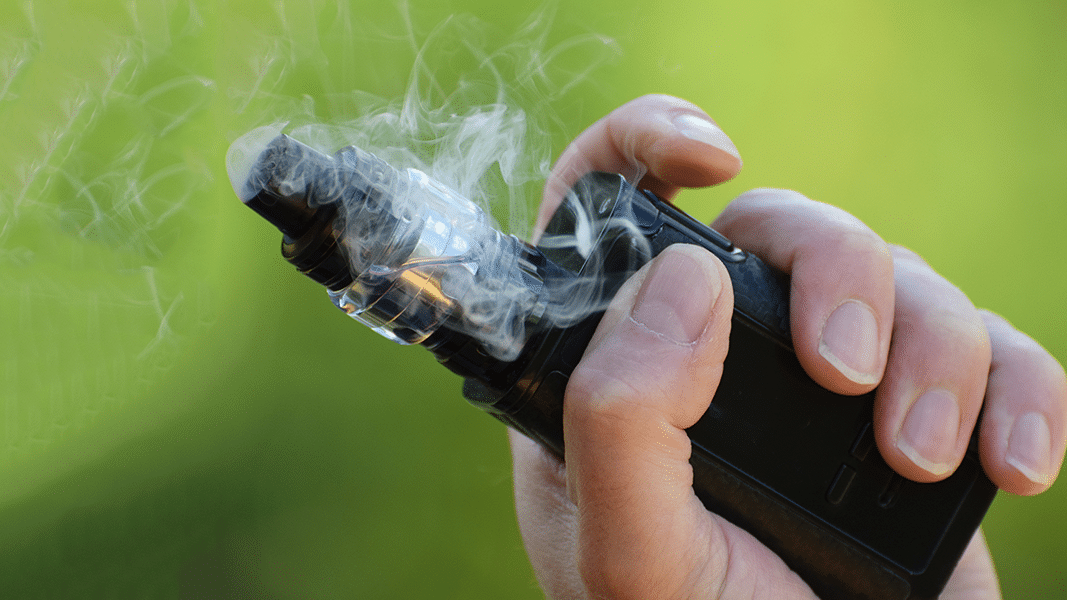The CDC (Centers for Disease Control and Prevention) released a report on October 4th highlighting some facts about the recent outbreak of lung injuries related to vaping. The spate of hospitalizations appears to have started in July of 2019. As of October 1, 2019, there were 1,080 reported cases matching the CDC criteria and 18 deaths. Those afflicted are typically male and in their early twenties. No single cause has been associated with all reports. Only 578 patients (about half) reported on what they had vaped in the 3 months prior to symptom onset. Of these, 78% reported using THC-containing products, and 58% reported using nicotine-containing products. Many reported using both.
There has been enormous speculation about the possible causes of these injuries. Blame and attention has tended to focus on flavoring agents and thinning and thickening additives, particularly vitamin E acetate – additives that Project CBD has been warning about for years. Others have speculated that synthetic cannabinoids may be playing a role. Several state health departments have noted that injuries seem to correlate to THC vape cartridges that had been illegally manufactured and purchased in the “black market.”
If you have experieced vaping related lung injury and still have the vape cartridges you were using, the FDA is collecting samples here.
CDC Criteria for Confirmed & Probable Cases of Vaping–Related Lung Injury
According to the CDC, a confirmed case of Vaping-Related Lung Injury is defined as an individual that: (i) has vaped within the past 90 days, (ii) has pulmonary infiltrates which appear as ground-glass opacities on a CT scan, and (iii) has no infection, heart condition, or other disease that could explain respiratory distress. If a lung infection has not been fully ruled out, vaping is assumed to be the probable cause. Given the inclusiveness of this criteria, it’s quite likely that multiple causes are contributing to the hospitalizations and deaths.
Scientific Resources
While hundreds of scientists are now urgently working to figure out the cause of these injuries, there are clinical case reports of these sorts of injuries going back to 2011. Below is a sampling of pertinent case articles and studies. We will keep you posted as new research emerges.
General
- E-cigarette Product Use, or Vaping, Among Persons with Associated Lung Injury — Illinois and Wisconsin, April–September 2019, Centers for Disease Control and Prevention, September 27, 2019
- Pulmonary Illness Related to E-Cigarette Use in Illinois and Wisconsin — Preliminary Report, New England Journal of Medicine, September 6, 2019
- Electronic cigarettes disrupt lung lipid homeostasis and innate immunity independent of nicotine, Journal of Clinical Investigation, September 4, 2019.
Flavoring & Diluting Agents
- Vitamin E Acetate in Bronchoalveolar-Lavage Fluid Associated with EVALI, New England Journal of Medicine, December 20, 2019.
- Formation of flavorant–propylene Glycol Adducts With Novel Toxicological Properties in Chemically Unstable E-Cigarette Liquids, Nicotine & Tobacco Research, October 18, 2019.
- Mysterious vaping deaths: Why US officials are focusing on flavour, Nature, October 1, 2019
- Electron transfer as a potential cause of diacetyl toxicity in popcorn lung disease, Reviews of Environmental Contamination and Toxicology, December, 2009
Pneumonitis
- Pathology of Vaping-Associated Lung Injury, New England Journal of Medicine, October 2, 2019
Lipoid Pneumonia
- Imaging of Vaping-Associated Lung Disease, New England Journal of Medicine, October 10, 2019
- Pulmonary Lipid-Laden Macrophages and Vaping, New England Journal of Medicine, October 10, 2019
- Vaping-Associated Acute Respiratory Failure Due to Acute Lipoid Pneumonia., Lung, October 3, 2019
- Outbreak of Electronic-Cigarette–Associated Acute Lipoid Pneumonia — North Carolina, July–August 2019, Centers for Disease Control and Prevention, September 13, 2019
- Respiratory failure caused by lipoid pneumonia from vaping e-cigarettes. BMJ Case Reports, 2018
Acute Lung Injury Patterns
- Lung Biopsy Findings in Severe Pulmonary Illness Associated With E-Cigarette Use (Vaping): A Report of Eight Cases, American Journal of Clinical Pathology, October 17, 1019
Synthetic Cannabinoids
- Clinical effects of reported synthetic cannabinoid exposure in patients admitted to the intensive care unit. The American Journal of Emergency Medicine, June 2019
- A Case of Acute Life-Threatening Pulmonary Hemorrhage from Synthetic Cannabinoid Abuse. Case Reports in Pulmonology, May 2019
- A new side effect of synthetic cannabinoid use by the bucket (waterpipe) method: Acute respiratory distress syndrome (ARDS). Turkish Journal of Emergency Medicine, June 2017
- A Curious Case of Inhalation Fever Caused by Synthetic Cannabinoid. American Journal of Case Reports, June 2016
- Acute Eosinophilic Pneumonia with Respiratory Failure Induced by Synthetic Cannabinoid Inhalation. Balkan Medical Journal, November 2016
- High Times, Low Sats: Diffuse Pulmonary Infiltrates Associated with Chronic Synthetic Cannabinoid Use. Journal of Medical Toxicology, June 2013








